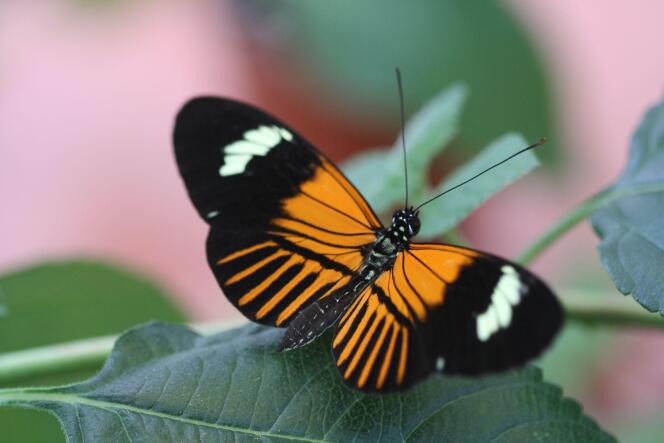


Butterflies of the Heliconius genus have never been fans of discretion. For the millions of years they have occupied the valleys and forests of South America, being noticed has even been a condition of their survival. They have the good fortune to be inedible, a property they inherit from the passionflower plants on which their larvae develop. But they still have to make this known to their predators. Evolution has equipped them with colored signals to warn birds. "Danger, don't touch!" These markings are shared by certain, sometimes distant species, in a mimicry that has been admired by naturalists since Charles Darwin.
With the article published on Wednesday, April 17, on the Nature website by an international consortium of researchers, Heliconius will, once again, stand out from the crowd. This time, in the eyes of scientists the world over. The team, co-directed by the Universities of York in the UK and Harvard in the US, has just demonstrated that the species Heliconius elevatus was born from the cross-breeding of two others: Heliconius pardalinus and Heliconius melpomene. This is enough to seriously shake up our representation of what we usually call the tree of life.
We all learned it at school is that, over the course of time, a very long time, the branches corresponding to ancestral species have divided, giving rise to new species. The most common of these separations come from the appearance of geographical barriers (rivers, mountains). Physically separated, two groups evolve separately until they became two species in their own right. Other ecological constraints (predators, diet) act in the same way, each time splitting a species in two. Scientific progress has, of course, refined this pattern. Two species can even exchange genes – think of the 2% of genes we inherited from Neanderthals. The tree of life became a bush, but no new species was born from these mixing. At least in the animal world.
In plants, speciation by hybridization has been observed in many cases, with two plants giving rise to a third. But to achieve this, the third plant has to combine the genomes of the two source plants, doubling its chromosome number. Animal biology formally rules out this possibility.
After 10 years of collaboration, the teams of James Mallet at Harvard and Kanchon Dasmahapatra at York, joined by numerous other researchers – notably from South America and France – were able to show that such hybridization had indeed led to the creation of a new butterfly species. To achieve this, the scientists carried out a detailed combination of observation in the wild, in-depth genetic studies and cross-breeding in captivity.
You have 38.32% of this article left to read. The rest is for subscribers only.
